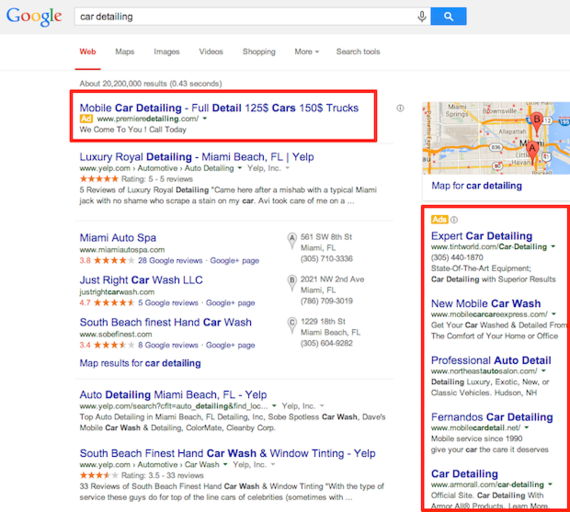
If you’ve ever searched for a product on Google, you’ve witnessed paid search in action. And if you sell your products online, you’ve probably at least thought about employing a paid search strategy to get your brand in front of more people.
Having a thorough understanding of paid search can go a long way in bringing more profitable growth to your brand. Paid search tends to be stronger than other forms of advertising because the consumer is already explicitly searching for something related to your product. Since they’re actively looking for more information, there’s a high chance of them converting to a buying customer.
Keep reading to learn more about paid search and why it’s important, trends we’re seeing in paid search, and how you can optimize your paid search strategy.
What Is Paid Search?
Paid search is a digital marketing strategy in which advertisers host sponsored results near the top of a search engine results page (SERP). It operates on a pay-per-click (PPC) model, meaning advertisers only have to pay up when someone clicks on the listing. The cost per click varies based on the competitiveness of the keyword you want to rank for.
Ok, So Why Is It Important?
Paid search tends to be stronger than other forms of advertising because the consumer is already explicitly searching for something related to your product. Since they’re actively looking for more information, there’s a higher chance of them converting to a buying customer.
This unique opportunity to appear at the top of your target audience’s search results is something that all ecommerce brands should consider.
Paid Search Trends
 Just like almost everywhere else, one major trend we’re seeing in paid search is a shift to being mobile-focused. Any brand that doesn’t have a good mobile site is going to struggle to do well with paid search.
Just like almost everywhere else, one major trend we’re seeing in paid search is a shift to being mobile-focused. Any brand that doesn’t have a good mobile site is going to struggle to do well with paid search.
Most people start their shopping journey on mobile and purchase on desktop, so if your site has a poor mobile user experience (UX), the customer is less likely to actually convert. Even if they do convert, they’re still less likely to become return customers. Therefore, it’s very important to optimize your site for mobile.
The two most important aspects to focus on for mobile optimization are speed and checkout.
Another common trend we’re seeing spread to this area is automation. For example, Google Machine Learning offers different options based on your priorities (e.g. more money vs. more brand awareness). All you have to do is give it your budget and it will take almost everything else into account (e.g. bid offers, mobile vs. desktop, demographics) based on your budget.
Note: Google Machine Learning can save digital marketers a lot of time if it works correctly, but you must be very careful not to make any typos because it spends your money automatically after you provide it with your budget.
Our last emerging trend is increased competition. Brands used to only have to compete against themselves on Google; now, competition is everywhere. Of course, one of the biggest competitors is Amazon, whose expansive budget has helped it grow as a huge competitor against paid search. In some cases, your goal may have to be to come in at position #2 behind Amazon.
Keep this in mind in all of your strategies and think about what types of keywords you want to bid on, what position to aim for, and what ad copy to leverage.
Optimizing Paid Search
There are a lot of factors to keep in mind as you leverage all of your insights to make the most out of your paid search campaign. Some of these factors are devices being used, audiences and demographics searching for your product, times target audience is searching for your product, and different versions of queries they’re using.
You can optimize your campaign by analyzing all of the above data on your target audience and catering toward that.
A great example of an optimized paid search campaign was seen by one of our clients, a leading retailer in the home goods industry. The ROI team spotted an opportunity for the retailer to scale and optimize their non-branded campaigns through a new paid search strategy. Prior to ROI Revolution’s involvement, our client’s online transactions via paid search were low and static. The next year, those numbers skyrocketed. In every successive month from January to November, transactions rapidly increased, and the retailer ended the year with more than 20x non-branded transactions YOY. Click here to read the full case study!
We have tons more resources on paid search that you can use to help your brand grow profitably. You can check out some of them below!
- The 2019 Ecommerce Paid Search Report With Industry Insights From Google
- Local Campaigns: What They Are & Why Your Brand Should Use Them
- Product Feed Optimization: Essential Details Brands Need to Know



